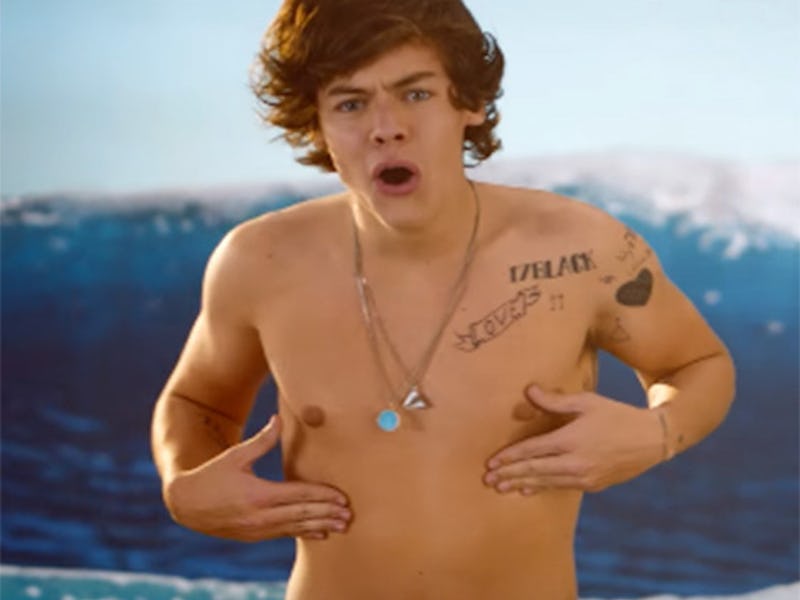The Scientific Reason Why Some Humans Have 4 (or More) Nipples

Some people are born with more than they need: Extraordinarily good looks, heaps of talent, and, in Dunkirk star Harry Styles’s case, an extra pair of nipples. He was recently confronted about nipples three and four by comedian Chelsea Handler on an episode of her self-titled Netflix show, set to be released on July 21. “There’s a rumor on the internet that you have four nipples,” said Handler. “Have you heard that?”
Styles responded: “Correct.”
He pointed to his “usual” pair, then to the spare set, which was “just a little lower.” He didn’t show them off, but fans of his former boy band, One Direction, have seen them before: In the video for the 2012 single “Kiss You,” Styles revealed all four. Indeed, the extra pair looked like nipples, though they were smaller and flatter, like moles.
However, an up-close look at “supernumerary nipples,” as scientists refer to them, reveal that they’re much more than charming birthmarks. They are definitely nipples. And in some cases, they’re actually the partial remains of an extra set of breasts.
Harry Styles and his four nipples
All of the different kinds of extra nipples — there are eight categories in total — were first laid out in the journal Duodecim in 1915 by a Finnish doctor named Y. Kajava, whose classification scheme has been the go-to for nipple researchers since it was published. Kajava’s categories span different combinations of nipple, breast tissue, fat tissue, and areolas: Styles’s would likely fall under category six — a nipple with no areola or underlying breast tissue, which is known as a “polythelia.”
But there are plenty of other types of extra nipples, some of which have the remains of a partially formed breast underneath it. If you had a category one extra nipple, complete with areola and a mound of breast tissue beneath it, you would be the proud owner of a “polymastia.” The Genetic and Rare Diseases Information Center of the United States National Institutes of Health refers to the condition as a “common, minor birth defect” — one that’s caused when fetal development goes slightly (but safely) awry. It’s estimated that about 200,000 people are born with extra nipples in the U.S. each year.
Supernumerary nipples look a lot like real nipples but much smaller.
In the early days in the womb, a human embryo is a stack of different types of tissue, including a layer known as the ectoderm, which eventually becomes the skin and the breasts. Around week four, a pair of strips in that layer start getting thicker along the embryo’s “belly,” forming the “mammary ridges” or “milk lines,” lumps of tissue that have the potential to develop into breasts. Usually, as the fetus develops, all of those lumps disappear, except for the pair at one specific location — the “fourth intercostal space of the anterior thorax” — where we usually expect breasts in both males and females to occur.
But sometimes the lumps don’t regress fully, and so the growing fetus has the raw material to grow extra breasts. Most commonly, people will have one or two extra nipples (development isn’t always symmetrical, after all), but sometimes the entire milk line sticks around, as it did in the case of the seven-nippled man featured in a 2012 case study in the Indian Journal of Human Genetics.
This man's seven nipples are all along the embryological "milk line."
The NIH’s Genetic and Rare Diseases Information Center says that having extra nipples rarely causes symptoms or complications, noting that surgery isn’t usually necessary unless the presence of the extra nipples causes psychological stress. It’s understandable why people might find them a little strange — usually, extra nipples along the milk lines are seen only in other mammals, like cats and dogs, and in rare cases, extra nipples can wind up off the milk line, like on the bottom of the foot.
But let us celebrate nipples in all their shapes, numbers, and locations. As Styles and other multi-nippled celebrities like Mark Wahlberg, Tilda Swinton, and Chandler from Friends have proudly demonstrated, when it comes to nipples, more is always merrier.
More to love